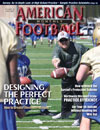Article CategoriesAFM Magazine
|
The Combination Triple Optionby: Scott DieterichParkview Baptist High School (LA) © More from this issue At Parkview Baptist, we have been running a flex-bone/slot-option type of offense over the past nine seasons. During that stretch, we have been able to maintain a high level of consistency as an offense and as a program as evidenced by the following statistics: A few of the reasons why we believe in this style of offense are:
|
|
|||||||
| HOME |
MAGAZINE |
SUBSCRIBE | ONLINE COLUMNISTS | COACHING VIDEOS |
Copyright 2025, AmericanFootballMonthly.com
All Rights Reserved





